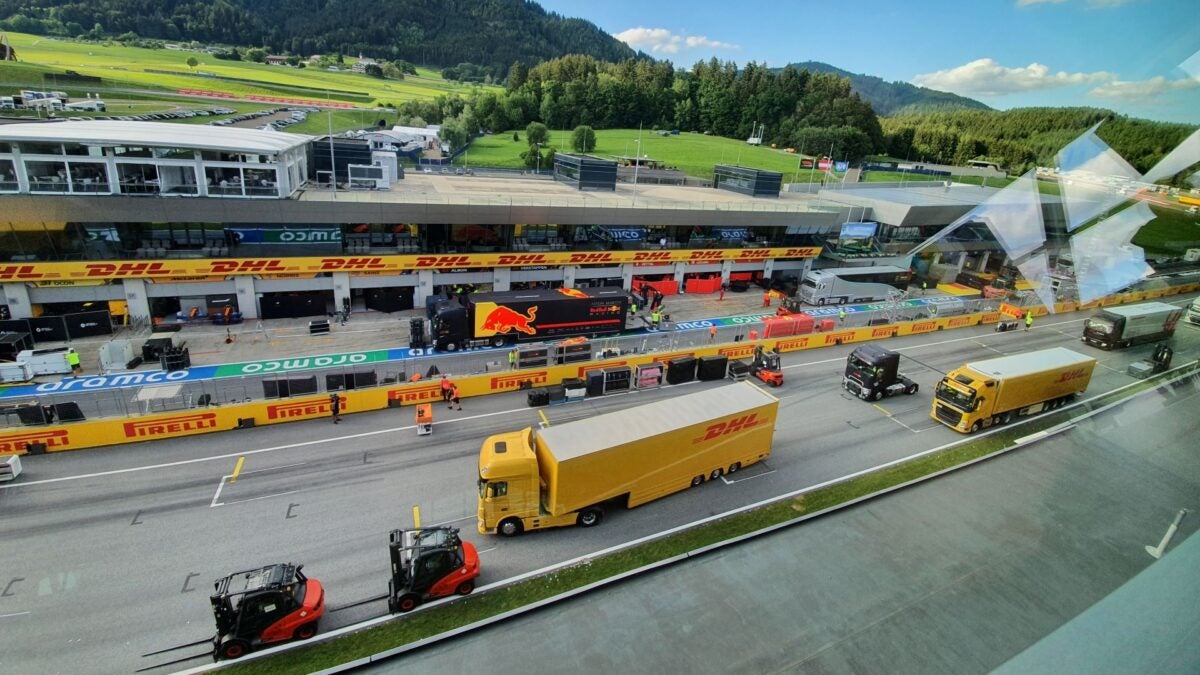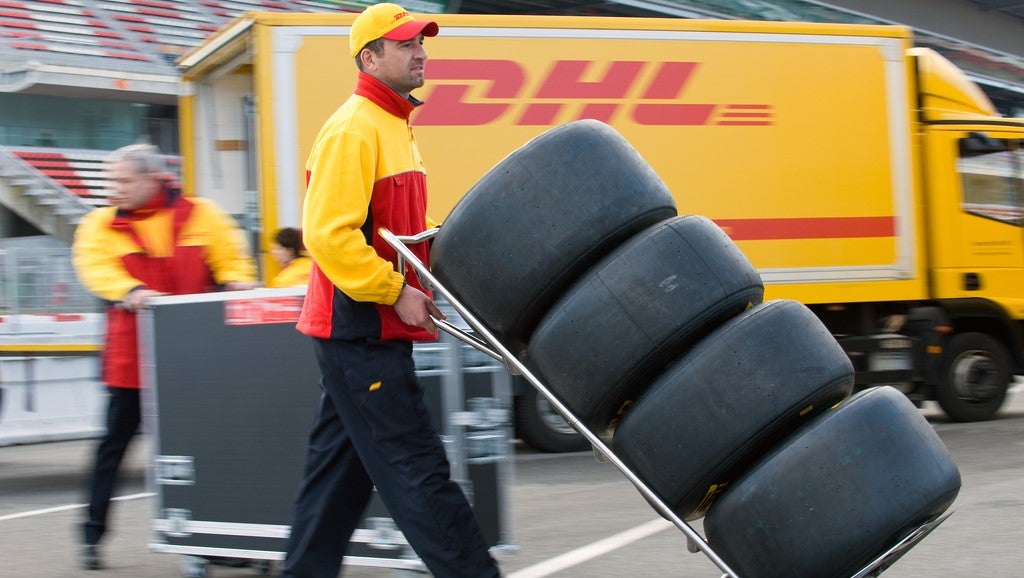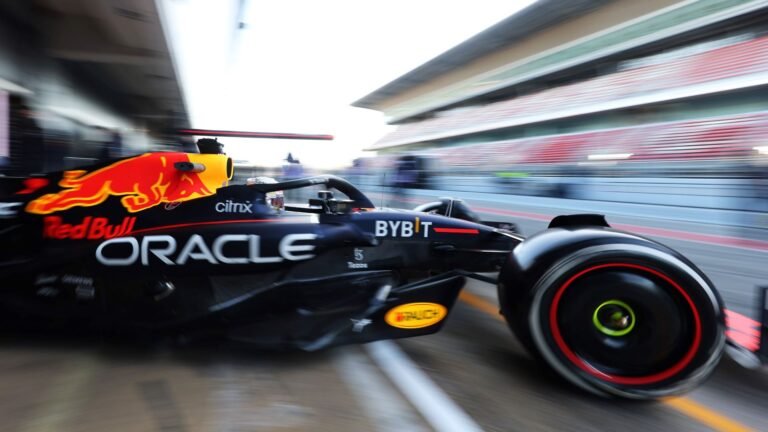Formula One kicks off a new racing season in Bahrain this weekend. It’s a highly technical sport where winners and losers are separated by hundredths of a second, and demanding team owners spend small fortunes in expectation of success.
High level events would not be possible without the ability to pack and move racing machines, parts, tools, fuel, oil, tires, broadcast equipment and entertainment accessories under extremely difficult and mission-critical conditions.
Extreme sports traveling the world require extreme logistics.
“You are working as hard as you can logistically, and any slip-up has a huge impact on the teams,” Formula 1 sporting director Steve Nelson told reporters in December ahead of the season-ending Abu Dhabi Grand Prix.
Red Bull’s Max Verstappen’s dramatic championship win last year came down to the final race, where he beat Mercedes’ Lewis Hamilton in a controversial finish with the help of the race director’s ruling on the final lap.
FI’s popularity in the United States is growing dramatically due in large part to the Netflix series “Drive to Survive,” which offers a compelling inside look at the drivers, teams and competition. ESPN’s live coverage in 2021 averaged a record 934,000 viewers, and in a poll of 6,630 adults conducted by Morning Consult, 28% identified as Formula 1 fans — roughly the same as IndyCar, the most established open-wheel racing circuit in the U.S. United.
It is no surprise that Formula 1 will add a second American race to the 2022 season, with Miami joining Austin, Texas, as host tracks. It is the first time in 38 years that Formula 1 has raced in two American cities in the same season.
On Saturday, the defending champion achieved an amazing achievement on the track in pre-season testing with a time of 1:31.72 seconds, thanks to composite materials, advanced aerodynamics and cutting-edge software.
The logistics process also depends on speed and engineering precision. If a single piece does not make it to the race, the team can be severely disadvantaged.
In fact, the Haas Formula 1 team missed the first round of pre-season testing in Bahrain last week after the cargo plane they used to transport their car grounded in Istanbul due to technical difficulties. The shipment arrived two days later than scheduled, according to F1.
Formula One shipments move by land, air and sea to five continents in nine months. With 22 events less than a week or two apart – the Russian Grand Prix was canceled after the invasion of Ukraine – the logistical schedule is intense.
Deutsche Post DHL Group, the official logistics partner of Formula 1, has a dedicated staff of 35 specialists who travel to each race to manage transport, preparation, disassembly and packing.
In 2021, DHL moved 1,540 tons of equipment and 532 vehicles over 74,500 miles. That means about 44 to 55 tons for each of the 10 teams, more than 330,000 pounds of broadcast media equipment, 30 containers of tents and other hospitality equipment, and more than 22,000 pounds of electronic equipment per team.
DHL also provides intermodal transport for around 460 tonnes of Formula E equipment, including electric race cars, batteries and charging units.
Teams and other F1 units pack all equipment into air containers or pallets for truck transport. The collective charge is referred to as a group. On average, equipment is delivered to the racetrack 14 days before the event and removed one week later.
In addition to the equipment transported from track to track, about 120 ocean containers rotate in the background to transport less urgent equipment, such as furniture or catering materials, to the race sites.
Paul Fowler, global head of motorsport at DHL Global Forwarding, said the group transported by air or road should be on the track eight to 10 days before the race, depending on the equipment and schedule.
In addition, five to six duplicate kits for each team are shipped via sea freight and stored at different locations on each continent.
DHL has three teams – inbound, on-site customer service and packaging – that work on top of each other to manage every step of the process, especially with back-to-back events. Even before the checkered flag is waved at the end of the race, the DHL team is already disassembling and storing the equipment.
For each race, priority pallets containing materials for garage setup are usually the first to arrive on site, so the setup team can start building workspaces before the rest of the staff and equipment arrive, according to a YouTube video by Williams Racing. The team says it takes about 60 computer monitors to get to the track, with 400 miles of wires and cables to run the IT infrastructure. For races that require air transportation, teams cannot start setting up their individual spaces until all cargo has arrived to ensure fairness, according to Formula 1 experts.
DHL typically uses five Boeing 777 freighters for a mobile event. Seven aircraft participate if there is a lower series race, F2 or F3, on the same track.
Most transportation for racing in Europe is done by truck.
Fowler said Brexit created additional logistical complications because most teams are based in the UK, and everyone had to adapt to complex new customs procedures, documentation requirements and fees for crossing borders.
DHL Forwarding experts were able to step in and provide ATA Carnets, a temporary international customs document allowing duty- and tax-free imports for up to one year. These “cargo passports” are typically used by travelers and businesses who cross multiple borders and return home with the same goods.


The motorsport boss said DHL expects to use more sea freight in the future because the lower cost is in line with new Formula 1 cost caps and is more sustainable, but doing so now carries risks due to the global backlog and widespread delays plaguing the industry.
In the past, race cars traveled as complete units. Today, they are disassembled, with parts placed in foam slots, sometimes wrapped in bubble wrap as an extra precaution, and transported in protective compartments specially designed to fit an air container. It is reassembled at the next destination. Each plane can carry about 40 cabins, Fowler told FreightWaves.
This year, Fowler said, logistics planners will have to make provisions for enlarged shipping boxes to accommodate a new type of frame that requires larger rims, although the exact effects on logistics won’t be known until teams figure out the best way to load.
DHL also has to manage express shipping outside of the normal routine, such as when a team rushes in a replacement vehicle from the factory or replenishes shipping with modified parts for the vehicle. The parts must also be flown in and returned for testing in special laboratories around the world.
“We must always be prepared for last-minute requirements, because that could have an impact on the race,” Fowler said.
DHL is also helping F1 reduce its carbon emissions and overall environmental impact.
The logistics provider is equipping its entire fleet of Formula 1 trucks with 5G data upload and GPS to monitor fuel consumption and choose the best routes, using more sea freight and replacing 747 freighters with more fuel-efficient 777s. By 18%. . Last year, the truck convoy tested biofuel on a trip from northern Europe to Italy, said Arjan Sising, DHL Group’s global brand market head.
As independent entities, Formula 1 teams are allowed to choose their own logistics suppliers. In January, Ferrari entered into a multi-year partnership with Ceva Logistics, part of the CMA CGM Group, to provide road and sea transportation of equipment and support items to Grand Prix and GT Series race sites. CEVA also manages spare parts shipments in Europe and global retail merchandise distribution.
DHL is responsible for shipping Ferrari racing cars.
Overcoming epidemic triceps
The past two years have been particularly complex and stressful, according to race officials. Coronavirus has forced multiple changes to the calendar.
Before the pandemic, tour operators and DHL would take up to 18 months to plan an event. Instead, some races were organized within weeks. Nelson said the relays condensed part of 2021 into three triangular matches on consecutive weekends, which racing teams are opposing because of the losses to travel crews.


Adding to the burden are DHL’s ongoing restrictions and strict safety protocols, such as disinfecting vehicles and cargo areas on the European Circuit using sprayers that turn disinfectants into a mist.
The biggest obstacle: a tri-continental championship consisting of races in Mexico, Brazil and Qatar. Bad weather has delayed air freight to Rio de Janeiro, causing shipments to arrive much later than scheduled and putting DHL in a race against time to get everything in place.
“It’s a tough challenge. You’re operating right on the edge of what’s logistically possible, and any setbacks have a knock-on effect on the teams,” Nelson said. “In Formula 1, we plan everything to death because when you plan you have a better chance of success.” . So we plan every detail months and months in advance. (With shorter horizons) Experience and trust in partners becomes extremely important because you don’t have the time to go through all the details that you would in a normal setting. We don’t take risks that we don’t think are worth taking.”
Reaching delivery targets during double and triple deliveries is never easy, but DHL has improvised to make it happen.
“There is no room for failure,” Fowler said.
Click here for more FreightWaves/American Shipper stories by Eric Kulish.
Sign up for the American Shipper Air newsletter.
Suggested reading:
DHL has committed to purchasing an additional 6 Boeing 777 freighters from Boeing
Singapore Airlines will fly a 777 freighter under the wing of DHL





